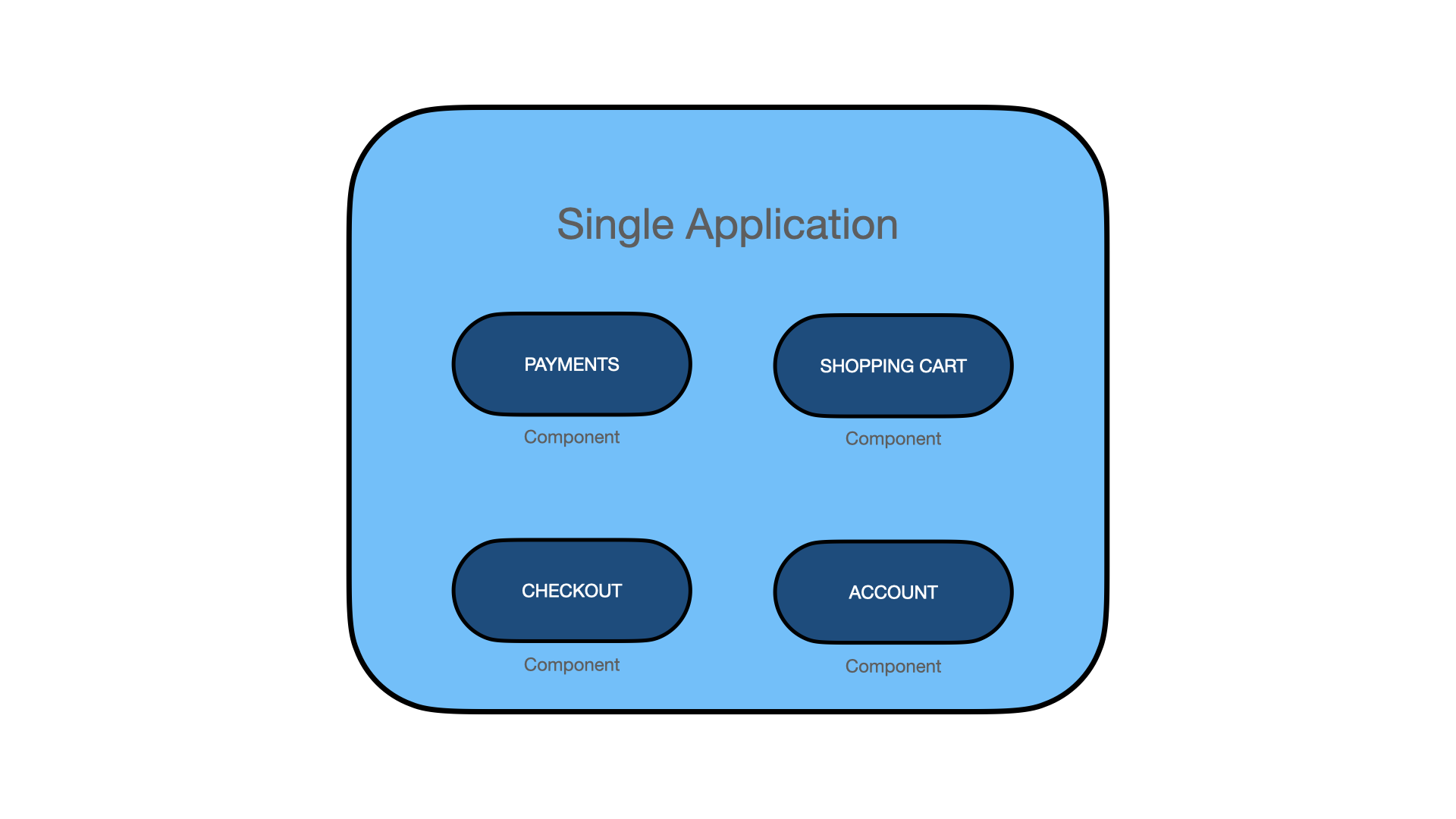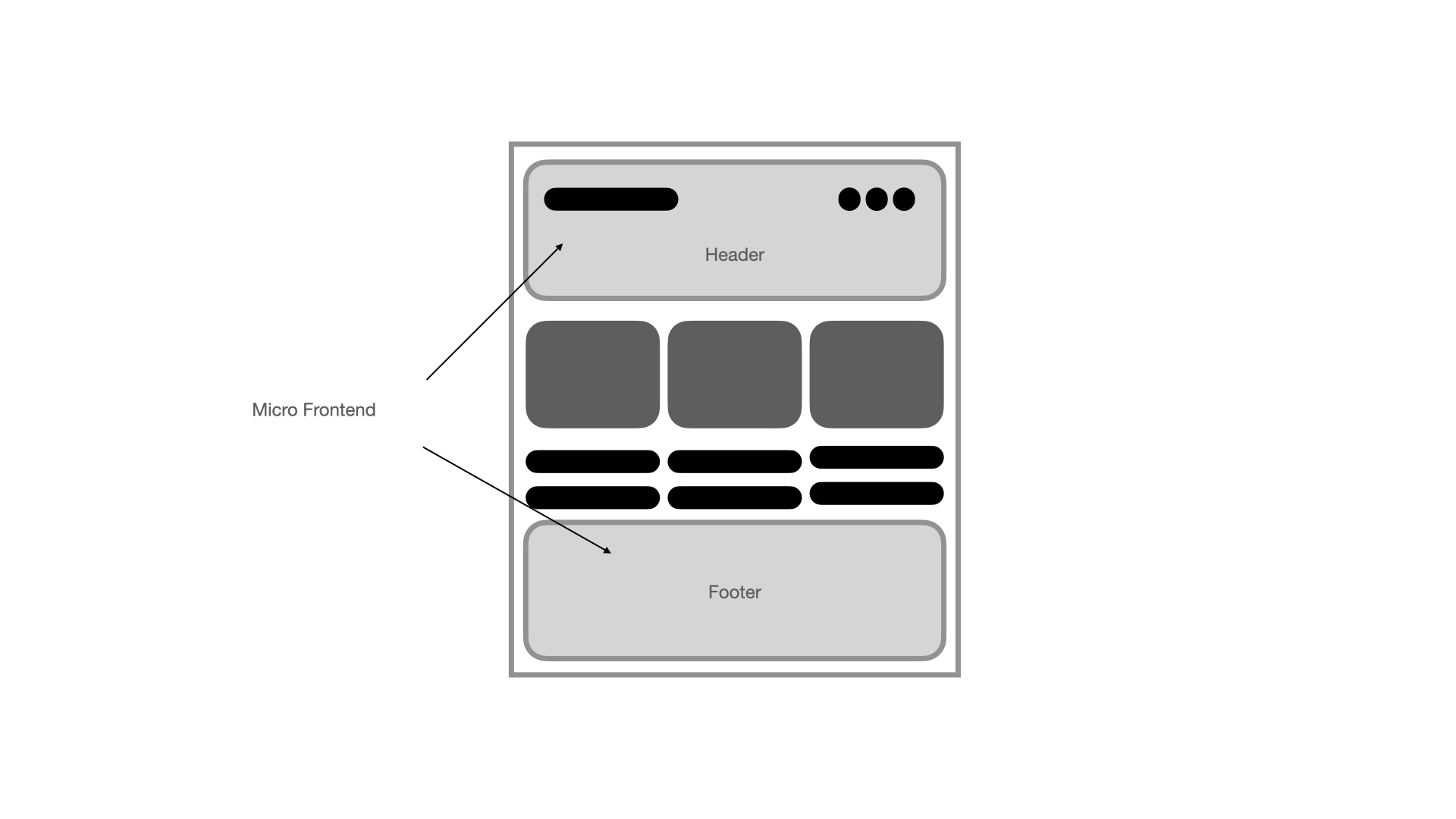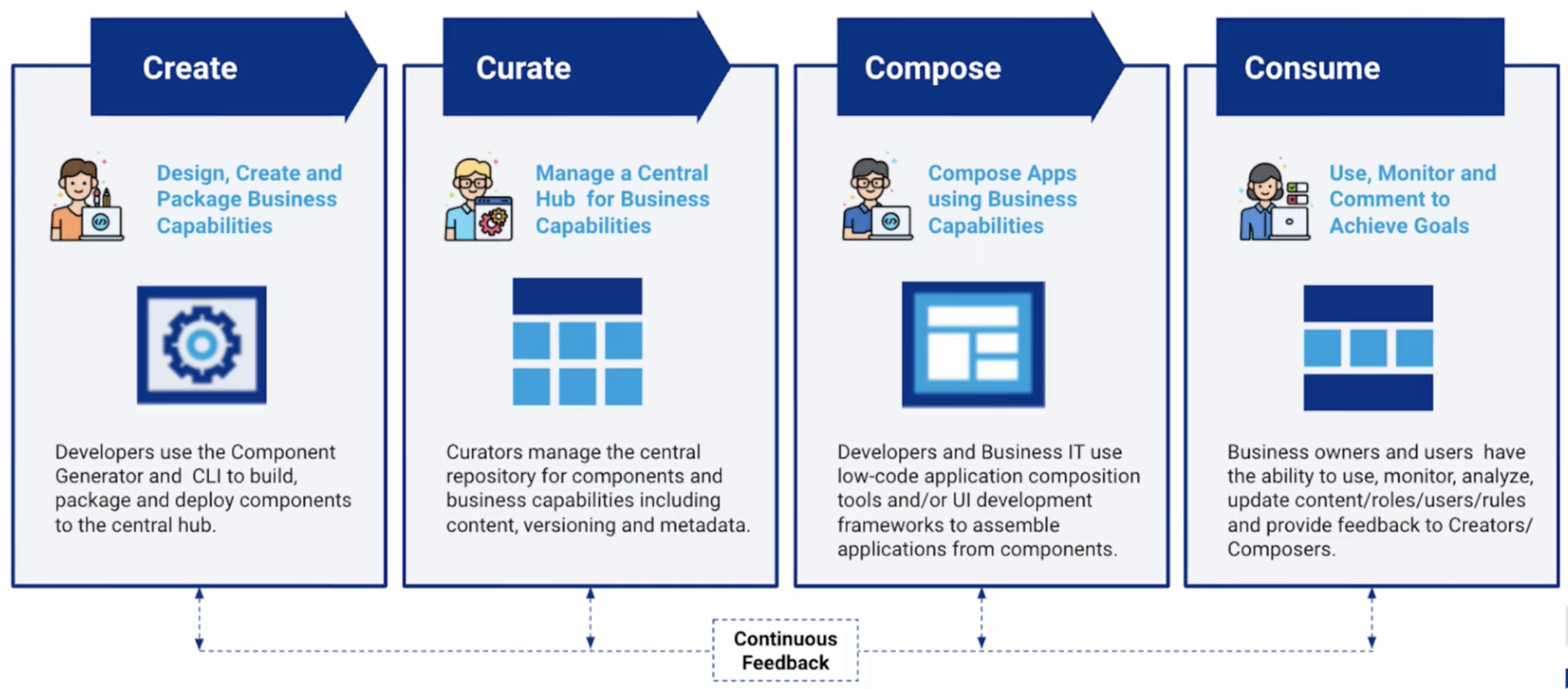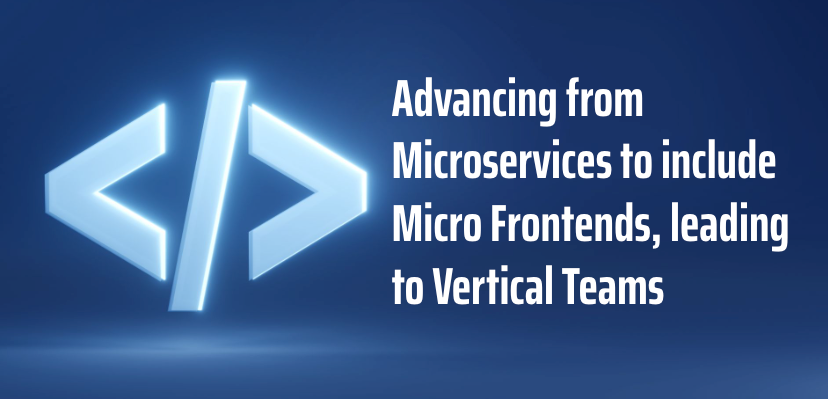The journey from a monolithic architecture to a more scalable one is more important than ever for larger companies. They need the flexibility to scale and keep up with market demands in this unpredictable, evolving market. As customers' needs change and grow, enterprise applications need to be designed around a loosely-coupled architecture. We will explore how microservices solve many issues arising from monolithic architectures. Then, we will dive further into how micro frontends take the concept of microservices to the next level. Finally, we will touch on how an application composition platform called Entando opens up possibilities surrounding micro frontends and how they promote vertical-type teams.
The Journey From Monolithic Architecture to Microservices
What is a Monolithic Architecture?
A monolithic architecture is where all application components are part of a single unit. All application components are developed, scaled, and deployed as one unit. Usually, one main technology stack or programming language is used for the entire application. This type of setup could be ideal for smaller applications, but the monolithic approach can entail many drawbacks for large applications.

- 4 components bundled within 1 application
Some Monolithic Architecture Disadvantages
Teams working in this environment run the risk of affecting each other's code due to things such as compatibility and versioning within the application. Where all the components of an application are operating as one unit, one dependency or version change for one team's component could cause another team's component not to function properly. Since developers may have different levels of experience, backgrounds, and coding styles, this could increase the chances of bugs or inefficient code within the application. The development process of this type of application has less flexibility, more tangled parts, and a tightly-coupled type of infrastructure. The application components are developed, scaled, and deployed as one unit; therefore, every change made would require the deployment of the whole application. Imagine having to deploy the entire application multiple times a day every time there is a need to make changes to a single component. The release process of an application will be much longer, potentially causing downtime and reducing productivity. This is also the case with scaling some small functionality within a single component of an application.
Once upon a time, the monolithic approach to development may have been the standard way of composing applications. However, as mentioned above, companies needed a more efficient way to develop, scale, and deploy their applications.
Microservices
What are Microservices?
Microservices are small individual components completely independent of other components of the application. Essentially, they are loosely-coupled, self-contained services that can make up one whole extensive application. Following the Single-Responsibility Principle of SOLID, microservices are mainly made up of one service, one process, one job, or one function. Therefore, changes to a microservice will not affect other components of the application due to its encapsulation-type nature. Unlike the monolithic architecture, microservices are developed, scaled, and deployed separately. However, they are still part of the application and can communicate with one another via APIs, Message Brokers, or Service Mesh. One of the more common ways microservices communicate with each other is through API endpoints. This communication is important as they are completely independent of each other.
One microservices is not concerned with what the other microservice's functions are, as long as it's able to access the data it needs through the API endpoint.
Microservices also eliminate the issue of deploying the entire application for a single component or feature. Microservices allow the deployment of a single component with new changes, increasing the release process timeline. Microservices also enable teams to work independently on a single component without affecting other teams working on different application sections. This workflow gives developers more flexibility to code in the language or framework of their choice.
Examples of microservices may include a shopping cart or an account component of an e-commerce website. As seen in the image below, four components could be microservices.

- 4 independently standalone components
Microservices have improved overall development and solved many issues or limitations surrounding monolith practices. Thus, we can benefit from microservices and enhance the development process even more. Until recent years, microservices have been mainly utilized in the backend. The next logical step is to extend this monolithic-to-microservices migration pattern to the frontend.
Micro FrontEnds (MFE)
What are Micro FrontEnds?
A micro frontend (MFE) has all the same development, scaling, testing, and deployment features we explored earlier with microservices. The significant difference is that a MFE is a tiny, independent piece of user experience or functionality within the user interface. It is typically divided by steps in a customer journey but can also be even more granular down to the components within a page. This clear division makes the team's code base more manageable by isolating possible failures into a single component. Teams can also take advantage of reusability with MFE components. Examples of MFE components include a webpage header or footer used throughout multiple pages.

In their production applications, many large enterprise organizations already use micro frontends such as Ikea, Spotify, and Zolando. Micro frontends provide the ability to take a design and deliver it in a modular way. As with microservices, micro frontends allow teams to update iteratively and release independently without risk. MFE's practices enable teams to exercise scalability easily by allowing more developers to work on the same project. Teams can also leverage framework diversity along with a customer focus environment where developers and non-technical managers can concentrate on one feature at a time.

Micro frontends practices take the concept of microservices to the frontend of an application. It seems like a natural progression that microservices have migrated into the frontend arena utilizing all of their benefits instead of monolithic approaches in large applications. Types of frameworks or tools that use micro frontends are Open Components, Bit, Luigi, and Entando.

- image resource Entando Website
What is Entando?
Entando can be used as a tool which has the capability to really bring micro frontends to life by providing the ability to automatically create microservices and micro frontends that can be installed into an application. Entando is an open source application composition platform (ACP) designed for Kubernetes. It's a set of technologies that enable teams to build, deploy, run, and manage applications. Entando utilizes the independent component concept, along with business capabilities, which are the building blocks of the platform. Components can be micro frontends, microservices, page templates, content, data widgets, UX, or UI elements. Moreover, Entando eliminates the need to code the same feature multiple times as they can be reused in other pages or applications. The business capabilities consists of software tools that enable developers, project managers, and business associates to collaborate through a 4 step process; create, curate, compose, and consume. See image below

- image resource Entando Website
Powered by Kubernetes, Entando provides customers with a fast and convenient user experience, simplifying deployments by abstracting the complexity of Kubernetes, thus accelerating app development.
Integrating MFE into existing legacy applications
Modernizing legacy applications with a micro frontend approach and microservices can allow you to update small pieces of a legacy system without a big-bang process. Upgrades or changes can be made gradually, piece by piece. Carve out only important vital pieces of functionality rather than rewriting your entire infrastructure from scratch all at once.
Leveraging Vertical Teams
In the agile development world, leveraging microservices and micro frontends, development teams can work on a single piece of functionality at a time from start to finish. Traditionally development teams were somewhat horizontally constructed, where one team may work on the back end, while another team works on the user interface, and so forth. This led to challenges around communication breakdown between teams and even delays in production or productivity due to one team potentially waiting for another team to finish before deploying a new feature. For instance, the back end team may not have the knowledge of the what the front end team does, however, they will need to communicate with each other if the front end part of the application needs to retrieve data from the database.
Entando's business capabilities architecture allows teams to be more vertical in the sense that each team is part of every step of the process. If one team is responsible for one feature component from start to finish, there is no waiting for another team to finish before developing, testing, or deploying that component. There's also a knowledge transfer aspect of teams working vertically. Developers, project owners, and business associates benefit from reduced communication barriers and deploy features faster. Project owners are able to leverage managing vertical teams as well, due to the efficiency of the vertical team workflow. Project owners and business associates benefit from vertical team members being unified and which the responsibility is focused on one feature at a time.
Microservices and micro frontends promote the health of vertical teams by carving out small pieces of functionality that layer the backend with the frontend. See the visualization below:

Communication barriers are reduced drastically when it comes to the vertical team environment. Examining the image above, one vertical team is part of a feature development life cycle process from start to finish. This eliminates the need of communication between a divided frontend and backend team, or a backend and database team for example. Instead there is one team where every team member plays a part in the entire development process. In this type of team environment, knowledge is shared throughout the team where everyone has some experience and knowledge of each area of the application, whether it be the database, backend or the user interface. This style of team development promotes unity keeping every team member on the same page without confusion or misunderstandings.
Wrap Up
Are you still trying to expand your enterprise to a more loosely-coupled platform? Make sure to extend your production environment passed just microservices, and all the components of your application are scalable to evolve with customer needs. To add or discover more about micro frontends, check out: https://martinfowler.com/articles/micro-frontends.html. You can also learn about Entando at https://entando.com if you are interested in using a platform that utilizes micro frontends as one of its fundamental development elements. Stay caught up as technology changes and peruse the other blogs and articles Ippon has to offer.


